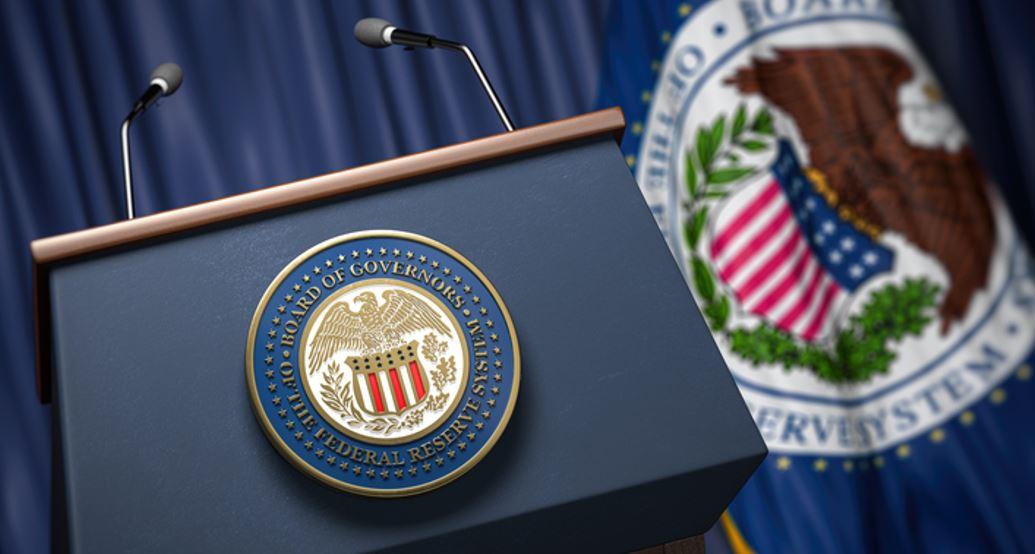
How Much Control Does the Central Bank Have over Interest Rates?
It is a commonly accepted view these days that the central bank is a key factor in the determination of interest rates. By this way of thinking, the Fed determines the entire interest rate structure by influencing the short-term interest rates.
The central bank influences the short-term interest rates by means of the monetary liquidity. Thus, by buying assets the Fed adds to the monetary liquidity, thereby lowering rates. When it sells assets, the exact opposite takes place.
According to popular thinking, the Fed also influences the long-term rates, which are seen as an average of current and expected short-term interest rates.
If today’s one-year rate is 4 percent and the next year’s one-year rate is expected to be 5 percent, then the two-year rate today should be 4.5 percent ((4 + 5)/2 = 4.5%). Conversely, if today’s one-year rate is 4 percent and the next year’s one-year rate is expected to be 3 percent, then the two-year rate today should be 3.5 percent ((4 + 3)/2 = 3.5%).
Given the supposedly almost absolute control over interest rates, it is held that the central bank through manipulations of short-term interest rates can guide the economy along the growth path of prosperity.
For instance, when the economy is thought to have fallen off the path of stable growth, it is held that by means of lowering interest rates the central bank can strengthen the aggregate demand. This in turn, it is held, is going to be supportive in bringing the economy onto a stable economic growth path.
Conversely, when the economy becomes “overheated,” then by lifting interest rates the central bank can push it back to the path of economic stability.
It seems that the central bank is in charge of interest rates and thus the direction of the economy. However, is it the case? Is it valid to hold that the central bank is the key in the determination of interest rates?
Individuals’ Time Preferences and Interest Rates
According to the founder of the Austrian school of economics, Carl Menger, the phenomenon of interest is the outcome of the fact that individuals assign a greater importance to goods and services in the present versus identical goods and services in the future.
The higher valuation is not the result of some capricious behavior, but due to the fact that life in the future is not possible without sustaining it first in the present. According to Menger,
Human life is a process in which the course of future development is always influenced by previous development. It is a process that cannot be continued once it has been interrupted, and that cannot be completely rehabilitated once it has become seriously disordered. A necessary prerequisite of our provision for the maintenance of our lives and for our development in future periods is a concern for the preceding periods of our lives. Setting aside the irregularities of economic activity, we can conclude that economizing men generally endeavor to ensure the satisfaction of needs of the immediate future first, and that only after this has been done, do they attempt to ensure the satisfaction of needs of more distant periods, in accordance with their remoteness in time.
Hence, various goods and services that are required to sustain an individual’s life at present must be of a greater importance to him than the same goods and services in the future. The individual is likely to assign higher value to the same good in the present versus the same good in the future.
As long as the means at an individual’s disposal are just sufficient to accommodate his immediate needs, he is most likely going to assign less importance to future goals. With the expansion of the pool of means, the individual can finally allocate some of those means toward the accomplishment of various ends in the future.
Life Sustenance and the Zero Interest Rate
As a rule, with the expansion in the pool of means, individuals are able to allocate more means toward the accomplishment of remote goals in order to improve their quality of life over time. With paltry means, an individual can only consider very short-term goals, such as making a basic tool. The meager size of his means does not permit him to undertake the making of more advanced tools. With an increase in the means at his disposal, the individual can consider undertaking the making of better tools.
While prior to the expansion of wealth the need to sustain life and well-being in the present made it impossible to undertake various long-term projects, with more wealth this has become possible. But very few individuals are likely to embark on a business venture which promises a zero rate of return. The maintenance of the process of life over and above hand-to-mouth existence requires an expansion in wealth, which implies positive returns.
Does the Lowering of the Interest Rate Permit Greater Capital Formation?
Contrary to the popular thinking, a decline in the interest rate is not the driving cause behind the increases in capital goods investment. What permits the expansion of capital goods is not the lowering of the interest rate but the increase in the pool of savings.
The pool of savings, which comprises final consumer goods, sustains various individuals that are employed in the enhancement and the expansion of capital goods, i.e., tools and machinery. With an increase in capital goods, it will be possible to increase the production of future consumer goods.
Individuals’ decision to allocate a greater amount of means toward the production of capital goods is signaled by the lowering in the individuals’ time preferences, i.e., by their assigning a relatively greater importance to the future goods versus the present goods.
Hence, the interest rate is just an indicator, as it were, which reflects individuals’ decisions. (Again, the decline of the interest rate is not the cause of the increase in capital investment. The decline mirrors the individuals’ decision to invest a greater portion of his resources).
In a free, unhampered market, a decline in the interest rate informs businesses that individuals have increased their preference towards future consumer goods versus present consumer goods and have increased their savings in order to support the expansion and the enhancement of the production structure. Businesses that want to be successful in their venture must abide by consumers’ instructions and organize a suitable infrastructure in order to be able to accommodate the demand for consumer goods in the future.
Central Bank Easy Policies Set Boom-Bust Cycles
Observe that in a free, unhampered market fluctuations in the interest rate are going to be in line with the changes in consumers’ time preferences. Thus, a decline in the interest rate is going to be in response to the lowering of individuals’ time preferences. Consequently, when businesses observe a decline in the market interest rate, they respond by raising their investment in capital goods in order to be able to accommodate the future likely increase in consumer goods demand. (Note again that in a free market economy a decline in the interest rate indicates that on a relative basis individuals have increased their preference toward future consumer goods and services versus present consumer goods and services.)
As a rule, a major factor for the discrepancy between the market interest rate and the interest rate that reflects individual’s time preferences is the actions of the central bank. For instance, an aggressive loose monetary policy by the central bank leads to the lowering of the observed interest rate. Businesses respond to this lowering by increasing the production of capital goods, i.e., tools and machinery, in order to be able to accommodate the demand for consumer goods in the future.
Note that the lowering of the interest rate here is not in response to the decline in consumers’ time preferences. Consequently, businesses by responding to this lowering of the interest rate are not abiding by consumers’ instructions. Since consumers did not lower their time preferences, they did not increase savings to support the increase in capital goods investment.
Every economic activity must be funded, i.e., individuals engaged in the activity must be allocated the necessary means to support their lives and well-being. One of the ways to facilitate the necessary funding is for the businesses borrow from banks.
On account of the easy monetary policy of the Fed and the emerging sense of prosperity, banks find it attractive to engage in the expansion of lending. The banks’ expansion of lending sets in motion an increase in credit out of “thin air,” i.e., lending unbacked by savings. This in turn gives rise to an increase in the growth rate of money supply. Increases in the money supply growth rate make it possible for the businesses to divert to themselves wealth from genuine wealth generators. This in turn undermines the wealth generation process. In this sense, these businesses are setting in motion activities that most likely would not be supported by the free, unhampered market economy. Since they cannot stand on their own feet, these activities, which we label bubble activities, are a burden on the wealth generators.
As long as wealth generators are producing enough wealth, bubble activities prosper against the background of increases in the money supply growth rate. Also, note that the expansion in bubble activities weakens wealth formation, exerting upward pressure on the time preference interest rate. (Note that with less wealth at their disposal, individuals are likely to increase their preferences toward present goods versus future goods). This widens the gap between the time preference interest rate and the market interest rate further. Once, however, the wealth generation process weakens significantly, i.e., when the pool of wealth either stagnates or declines, bubble activities come under pressure.
The demise of these activities as a result of the decline in the pool of wealth sets in motion a severe economic slump, since bubble activities survive on the loose monetary policies of the Fed, which divert to these bubble activities wealth from genuine wealth generators. (Note that bubble activities could also come under pressure if the Fed were to tighten its stance.)
Because of the widening gap between the time preference interest rate and the market interest rate, businesses have overproduced capital goods relative to present consumer goods. At some stage, by incurring losses, businesses are likely to discover that past decisions with regard to the capital goods expansion were erroneous. As a result, businesses are likely to attempt to correct the past errors.
While overproduction of capital goods results in a boom, the liquidation of the overproduction—the correction—produces a bust. The overproduction is due to the misallocation of resources brought about by businesses not abiding by consumers’ instructions. The longer the central bank tries to keep the interest rate at very low level, the greater the damage it inflicts on the wealth formation process and consequently the longer the period of stagnation is going to be.
Conclusions
As long as life sustenance remains the ultimate goal of human beings, they are likely to assign a higher valuation to present goods versus future goods, and no central bank interest rate manipulation is likely to change this. Any attempt by central bank policy makers to overrule this fact is going to undermine the process of wealth formation and lower individuals’ living standards.
The central bank can manipulate the interest rate to whatever level it desires. However, it cannot exercise control over the interest rate as dictated by individuals’ time preferences. It is not going to help economic growth if the central bank artificially lowers interest rates when individuals have not allocated an adequate amount of savings to support the expansion of capital goods investments. It is not possible to replace saved wealth with more money and the artificial lowering of the interest rate. It is not possible to generate something out of nothing, as suggested by many commentators.


